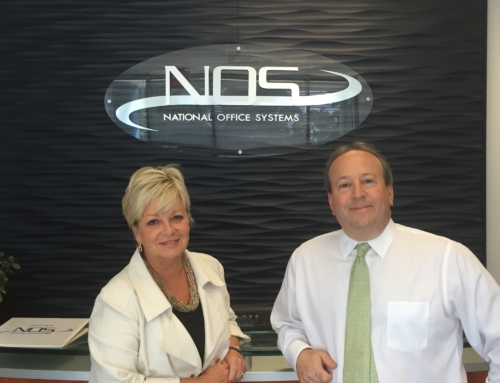By Fred Diamond
Executive Director, Institute for Excellence in Sales (IES)
I spoke recently with a Marine jet pilot who now helps selling professionals achieve greater success in their careers by using NLP and other mindset shifting techniques. In this blog, we talked about three processes military pilots use to get into the right state of mind to successfully complete their missions. We then applied them to the selling profession. We dove deep into these strategies on a special webinar, Strategies for Developing a Powerful Sales Mindset, with Marine pilot and performance coach Monica Marusceac. View the webinar here.
High-performing sales professionals are always looking for strategies they can use to ensure that their mindset is as powerful and confident as it can be. It’s critical to their success and career advancement. The key question is how to implement these strategies so that they become second nature.
At the IES, we find resources to address the issues that keep coming up for sales professionals. I discussed this particular one with Monica Marusceac, CEO of Peak Performance Associates. Monica’s company helps sales teams grow by enabling techniques to take them beyond their self-limiting behaviors. Monica is a Marine jet pilot and has identified ways to draw from her aviation experiences to teach sales people. She said there have been times when she was tired, discouraged and perhaps even confused about the flight plan she was about to execute. She knew that she couldn’t get in the cockpit in such a poor mental state.
She soon realized there are three things that she needed to master to have the right mindset to be a successful military pilot:
- Implement rituals
- Enable visualization
- Practice compartmentalization
Let’s see how these apply to selling.
IMPLEMENT RITUALS
Pilots always do the same thing every time. They have checklists for everything such as pre-flight routines, the way they put on their uniforms and the way they get into the cockpit.
Monica said there were minor rituals she performed regularly to get herself into a peak flying mentality. For example, she has a power move she would do prior to getting into the cockpit and would crack her neck before taking the runway. To ensure she performed the right ritual, Monica would ask herself the question: “What’s the energy I want to bring?”
Monica reflected back to her days in the squadron and recalled the “knee-board” which she had strapped to her leg. The knee-board had maps, cards, checklists and other information essential for that particular mission. Depending on the mission she would have a slightly different ritual for how she’d set up the knee-board.
Another ritual was putting on her flight gear. It was done the same way every time with the same stance and same leg movement to get the equipment in the right place. Once in the cockpit, muscle memory took over to get herself strapped in, flipping switches and checking the gauges. Initially it would take 30 minutes to get ready to fly but with experience, it only took ten.
These rituals, though seemingly minor, collectively gave Monica extreme confidence every time she flew. She could sense intuitively if something of extreme importance was about to go wrong and she could immediately spring into action to get every detail right.
RELATIONSHIP TO SALES: We hear firsthand at the IES that many sales reps do not adequately plan their process because they think of planning as being a major chore. However, if you think in terms of your plan as a succession of little rituals, a plan will come together that can lead to more wins.
When working with sales teams, Monica and her colleagues help high performing professionals identify rituals they should implement to elevate their game and get into the right emotional and mental space.
Let’s say you just completed 40 phone calls and all have ended badly. What’s your mindset about approaching number 41? The 40 previous negatives weigh big on your mind as compared to all the positive responses you’ve received in the past. Successful reps have rituals which allow them to disassociate from their failures, whether 40 or 400, and instead stay focused on what they need to do to achieve success.
Monica has acquired hundreds of techniques to accommodate different people’s learning styles (visual, kinesthetic, or auditory) and help them establish their own rituals for success.
ENABLE VISUALIZATION
Visualization is the second key element of developing a success mindset. As a military pilot, Monica would visualize her entire flight plan before entering the cockpit. She would visualize the target, angle, altitude and air speed she would need to fly to employ her air-to-ground weapons successfully.
If something went awry, she’d already mentally rehearsed how to maneuver and adjust when something needed to be modified. Visualization primed her brain to react appropriately even when the moment didn’t match the mental rehearsal.
RELATIONSHIP TO SALES: To apply this aspect of mindset improvement to professional selling, Monica works with sales reps to visualize the entire encounter with a prospect starting from the first greeting all the way through making the sale. For example, she has them visualize shaking hands with an enthusiastic smile, visualize actually sitting down and noticing what the prospect might be drinking and maybe even saying, “I’ll have what he’s having” in order to build rapport and establish trust even further. These visualization exercises are enhanced using proven neurolinguistic techniques to strengthen the positive associations created during the training and carry the mindset from the classroom into the field.
Monica liked to use the term “flash bulb” image. You’ve already visualized success so there’s no reason you cannot continually recreate it. See it through your own eyes again and again.
Imagine how far you could take this by priming your mind to achieve success through powerful visualization processes where you overcome obstacles effortlessly. Rituals and visualization are the mental nourishment necessary to increase sales success.
PRACTICE COMPARTMENTALIZATION
The third component, compartmentalization, is a product of rituals and visualization. It’s putting yourself in the mental and emotional state you need to be in to be successful.
Monica uses the example of all pilots having a call sign. Think back to Top Gun. Maverick. Goose. Iceman. When Monica walked into the squadron, she needed to be in a different state. A peak performance state. Her call sign was Moose. When she was Moose, she was a completely different person than Monica. She felt different. Her mindset was Moose.
When in this peak state all that matters is the task at hand. How Moose would handle a flight emergency was definitely different than how Monica would handle the same scenario.
Moose is not the person who cuddles at night with her kids. It’s the emotional and mental state Monica accessed in order to be a bad-ass jet pilot. Your inner “Moose” is who you need to be to in order to connect with people and close quickly. It’s the state of being so emotionally and mentally fit that nothing is taken personally and you rise above any stress.
RELATIONSHIP TO SALES: To have the right selling mindset, you need to be in a peak state and be ready for any contingency. You have to be “Moose.”
Have fun here. Can you think of a call sign that depicts your own confidence and power. What might your power move be? What rituals can you initiate to help you get in the right mindset? Can you visualize your success?
SUMMARY
How to develop a powerful sales mindset comes up ALL THE TIME at IES programs. It’s about having the confidence and skills to be in a trained state of mind where you are in power and are utilizing all the tools at your disposal to succeed. Learn more about IES membership.






